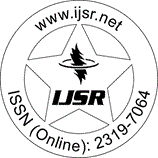Downloads: 2
India | Physics and Astronomy | Volume 13 Issue 2, February 2024 | Pages: 1547 - 1550
Behaviour of Cosmic Ray Intensity (CRI) with Solar Flare Index and CMEs
Abstract: This study elucidates the intricate relationship between cosmic ray intensity (CRI), coronal mass ejections (CMEs) and solar flares as pivotal factors influencing solar cosmic rays and their interaction with Earths geomagnetic activity. Through a meticulous analysis of pressure - corrected data from the Moscow Neutron Monitor Station and solar activity indices, the research delineates a strong inverse correlation between CRI and both solar flare index SFI and the number of CMEs across solar cycles 23 and 24. The findings, underpinned by correlation coefficients ranging from - 0.76 to - 0.87, underscore the significant impact of solar events on cosmic ray modulation. This comprehensive investigation not only reaffirms the Forbush decrease phenomenon but also contributes to our understanding of solar - terrestrial interactions, highlighting the pivotal role of CMEs in cosmic ray deflection and the broader implications for space weather forecasting and geomagnetic storm prediction.
Keywords: Cosmic Ray Intensity (CRI), Solar Flare Index and CMEs
How to Cite?: Rupali Gupta, S. K. Sharma, Nishant Khare, Puspraj Singh, "Behaviour of Cosmic Ray Intensity (CRI) with Solar Flare Index and CMEs", Volume 13 Issue 2, February 2024, International Journal of Science and Research (IJSR), Pages: 1547-1550, https://www.ijsr.net/getabstract.php?paperid=SR24220132014, DOI: https://dx.doi.org/10.21275/SR24220132014
